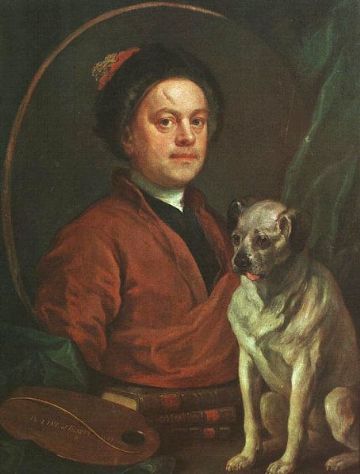The directory «Artists»
Hogarth William
(1697—1764)

English painter, satirist, engraver, and art theorist, b. London. At the age of 15 he was apprenticed to a silver-plate engraver. He soon made engravings on copper for bookplates and illustrations—notably those for Butler’s Hudibras (1726). He studied drawing with Thornhill, whose daughter he married in 1729. Hogarth tried to earn a living with small portraits and portrait groups, but his first real success came in 1732 with a series of six morality pictures, The Harlot’s Progress. He first painted, then engraved them, selling subscriptions for the prints, which had great popularity. The Rake’s Progress, a similar series, appeared in 1735. The series Marriage à la Mode (1745) is often considered his masterpiece. With a wealth of detail and brilliant characterization he depicts the profligate and inane existence of a fashionable young couple. Hogarth invented a sort of visual shorthand that enabled him to recall with perfect clarity whatever sight he wished to retain. He became, by this means, an enormously learned artist possessing a profound visual understanding. His Analysis of Beauty (1753) is a brilliant formal exposition of the rococo aesthetic. In such prints as Gin Lane and Four Stages of Cruelty Hogarth is very sincerely didactic, employing the weapons of satire against the cruelty, stupidity, and bombast that he observed in all levels of the society of his day. His portraits The Shrimp Girl (National Gall., London) and Captain Coram (1740) are two of the masterpieces of British painting. Hogarth’s major works are in England. In New York City the Metropolitan Museum and the Frick Collection possess examples of his work.
Sierra Leone, 1989, Plays of Shakespeare
USSR, 1957, Henry Fielding